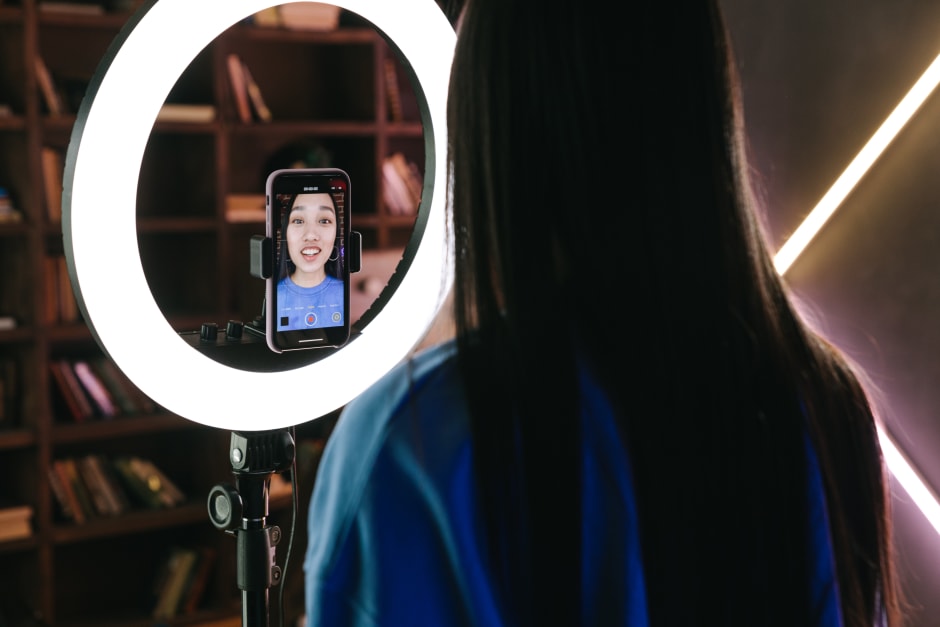The Creator Economy
Written by Samantha Sherer on 8 minute read
The way people buy things has changed and that means for businesses of all sizes, the way they engage customers needs to change, too.

There’s more to buying online than running an online store, and shoppers expect brands to know that. In fact, over half of customers expect you, as a brand, to understand their needs and expectations, not just sell a product.
This can seem a big ask, but influencer marketing has created whole new channels for companies of all sizes to be directly connected with their audience. It’s an approach that has become so important that the industry is worth a massive $16 billion, but the typical celebrity influencer is just one type of creator, and now creators expand way beyond the likes of Instagram to build their own robust marketing ecosystem - the creator economy.
When did the creator economy begin?
While creator economy growth didn’t soar until the age of social media, some suggest that creator economy as a concept dates back to the late ‘90s. In these early days, the currency of the creator economy was a simply internet relevance and followers, and creators generally being confined to the disciplines of art and writing. It was the birth of social media and platforms like Facebook, YouTube and Instagram that saw creator economy growth truly boom, and for things to become far more financially motivated.
The term “creator” was coined by YouTube in an attempt to break away from the term “YouTube star.” The users who contributed their videos to the platform were not, after all, merely the stars but the minds behind each video's conception and execution. “Creator” was deemed more appropriate and has now become synonymous with anyone who creates original content online.
What does creator economy actually mean?
Simply put, the creator economy is the market that exists around online creators and influencers. This digital-led, technology-based economy allows creators across a range of industries and topics to monetize the time and effort they put into the content they post online. And it’s about more than being big on YouTube; creators can find ways to generate an income from their creative efforts on a huge range of channels, including:
- Social media (Twitter, Instagram, Facebook)
- Video (TikTok, YouTube)
- Audio (Podcasts, Bandcamp)
- Books and eBooks (Amazon, self-publishing)
- Personal blogs
The creator economy doesn’t just refer to those who can call themselves full-time creators; in fact, only 2 million of an estimated 50 million creators can claim that title. But arguably what it offers is more important, the opportunity for absolutely anyone to monetize their creations, be it through a one-time viral video or through consistent contributions like running an Instagram influencer account.
How big is the creator economy?
The creator economy is estimated to be worth around $104 billion in 2022. This massive value is due to more than just the creators themselves. Other vital players in this lucrative market include:
- Followers
- Customers and consumers
- SaaS tools and software that support creation
- Collaborative brands and businesses
In short, creators are nothing without their audience, but audiences will quickly look elsewhere unless creators continue to make relevant, engaging, high-quality content. One key way to do this is to collaborate with others, not only other creators but brands and businesses just like yours.
There are numerous benefits to this collaboration, which help the creator economy growth to keep flourishing. For one, the cross-engagement of audiences helps boost the follower counts of both the creator and the brand, plus working with a professional brand improves the credibility of the creator and the relevancy of the brand. As well as this, the financial benefits are clear. Working with a creator or influencer saves brands on marketing and sees much stronger returns. Meanwhile, the creator gets rewarded for their skills in attracting and maintaining an online audience.
How important is social media to the creator economy?
In short, very. Social media is absolutely pivotal to the creator economy. For some creators, their entire empire exists only within social media platforms, based on one and supported by other social channels. Real-world events have also boosted the importance and relevance of social media. TikTok, for example, gained 180% growth during the COVID-19 pandemic.
Social media isn’t just about offering a public platform for creators though, it’s about evening the playing field. Where once advertising had a ‘them and us’ mentality, with customers never really being able to look behind the corporate curtain, the creator economy rips that curtain down. Creators are real people, relatable, easily accessible online, and operating with an authenticity that has been proven to connect with audiences far more than any perfectly executed ad.
How do content creators make money?
Having a presence on multiple social media channels is key for any creator, but that’s nothing so different from your average internet user. So how do content creators make money off theirs? There are several things to consider when it comes to understanding how to make money in the creator economy, including:
1. It’s not easy
While the creator economy certainly makes it easier for anyone to make some extra cash, that’s not to say it doesn’t take a lot of effort. And this is an effort that brands will want to pay attention to if you’re looking to find influencers, as follower counts don’t reveal the whole story when it comes to meaningful engagement.
2. It’s not always straight cash
What we mean is, making money as a creator doesn’t always mean one lump sum for their efforts. There are numerous income streams a creator can use including sponsorships, high ticket affiliate marketing, merchandise sales and brand ambassadorships. Many creators use their content to generate a small but reliable passive income that supplements their everyday jobs. For brands looking to work with creators, this is good news. Depending on who you want to work with, there’s a good chance costs will be significantly lower than if you launched a fully-fledged marketing campaign to a non-established follower base.
3. Uniqueness is key
As we mentioned, there are 50 million creators out there, so it takes a lot to stand out. An objectively successful creator knows how to make content that no one else is making. Many successful creators are brands themselves now (a symbol of status) and whatever they endorse, their audience is primed to also view it in a positive light. This is also why brands should carefully consider who they want to collaborate with and how that collaboration will look. A generic attempt at a campaign is unlikely to be inspiring, but a well thought out campaign can create a real buzz, as Tomahawk Shades demonstrated.
4. You won’t fit every creator
Authenticity is key with creator marketing these days. You may want to work with a big creator, but if their values don’t align with your brand, their followers will almost certainly know. More than that, if you haven’t done your research (because you’re operating on metrics and popularity instead of your own brand passion and knowledge) you might end up hijacking a hashtag that already belongs to a following. The key takeaway here? Know your brand, know your values and know what the creator you’re about to make the face of your brand values. Your shared goals and values should be more important than follower count, and your own genuine industry knowledge should lead the way on the campaigns you want to create.
5. Size isn’t everything
As tempting as it may be to try and work with the biggest creators and influencers you can find, this doesn’t always guarantee success. In fact, as counterintuitive as it may sound, smaller influencers may be the secret to more powerful engagement, which leads us to a key question…
How big a following does an influencer need to be successful?
There are several answers to this question, but fortunately, the answer doesn’t have to be in the thousands or even in the hundreds for a brand to find a worthwhile creator to collaborate with. The creator economy has all sorts of niches, and the nano-influencer is especially interesting. For reference, influencers can generally be placed into the following tiers:
- Mega-influencers: 1 million followers
- Mid-tier influencers: 100k-1 million followers
- Micro-influencers: 1k-100k followers
- Nano-influencers: 10-1k followers
Nano-influencers may be new to the creator economy so they may need more guidance from the brands they work with, but they also have a much smaller following. That means there is a greater sense of familiarity with their audience. After all, how can a mega-influencer possibly engage meaningfully with each of their one million followers? A nano-influencer, on the other hand, probably does that on a regular basis, replying to follower comments, direct messages and liking and sharing posts. And this small but mighty influencer is extremely valuable, with their close-knit audience helping brands benefit from the importance of trust in the creator-audience relationship. This trust is shown to be stronger in terms of buying decisions than those we place in real-life friends and family.
Making the most of the creator economy
As with the economy in general, a brand should understand the creator economy well before diving in. As you would with any business decision, do your due diligence on competitor research, creator research and make sure your creator collaboration is a well-considered, high-quality effort, not just an attempt to get in on the creator’s hype.
The creator economy has made it possible for anyone to find themselves an audience. But as a brand, it has also made it more important for you to know exactly who your audience is and the creators they want to see serve as the face of your product or service.
How can Awin help?
Awin helps brands partner with the perfect creators for your business and objectives. We find the right influencers and creators that fit your goals and values, and have dedicated influencer partnership managers to help you build meaningful business relationships that help you both make the most of the opportunities offered by the creator economy.



